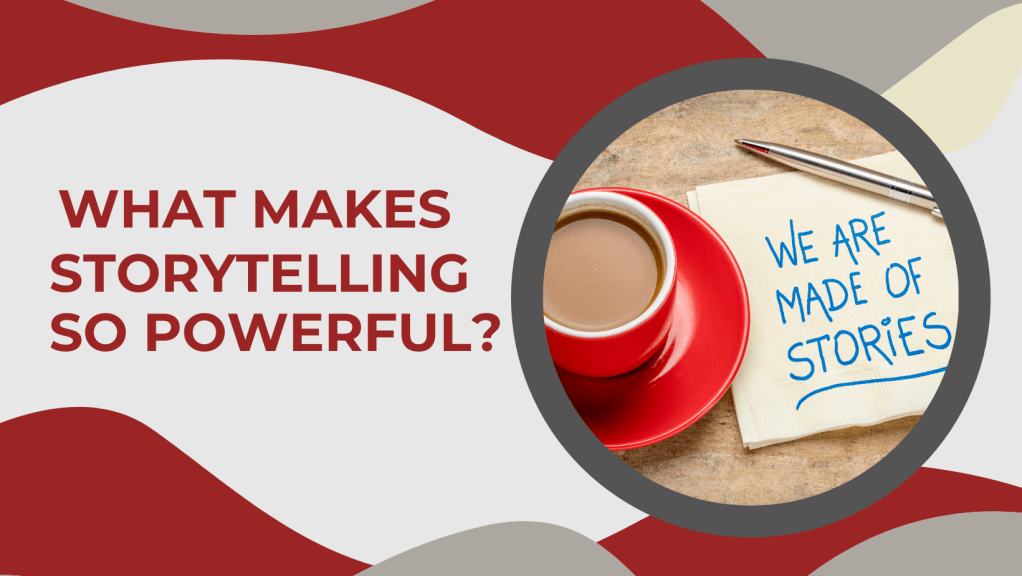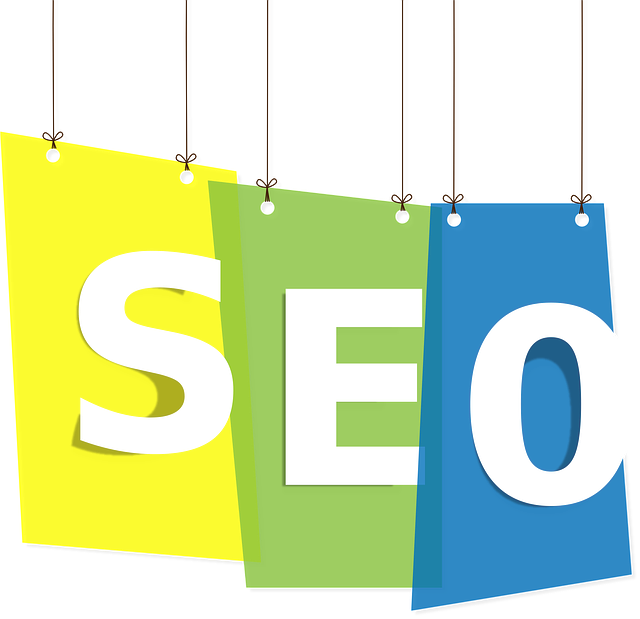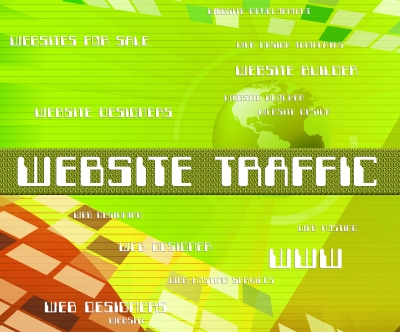If you’re going to make a success of marketing your business, you need to hone in on what is the best niche for you to be in. What will sell well? What will make you the most money?
What is a niche market?
A business niche is a focused area of a broader market that your business specifically deals with. It doesn’t matter whether your business is in a unique industry or a saturated market, it’s really important to differentiate yourself from your competition, as this is what helps you to win your audience.
You might like everything you do, but in order to be a successful business, you need to be able to distinguish your brand from your competitors, find what you are really good at and establish yourself as a dominant leader in that area. Even the biggest names can’t be everything to everyone; there are always going to be those small groups of people who need a particular product or service not met by the bigger companies…which is where the small business can step in.
What are you good at?
This first question is probably the most important. It’s not ‘what would you like to be good at?’ You need to be really honest with yourself – where do your talents really lie? What skills do you have? What do you enjoy doing? Once you have decided what you are good at, make a list of your skills and talent in that area. For example, if you love knitting, crocheting and sewing, which one do you excel in?
Once you know which you are best at…let’s say knitting for example, then you need to look at what skills and talent you have. So, it might be knitting baby clothes, knitting adult clothes, knitting toys – put the things you enjoy making most at the top of the list and so on, down to the ones you least enjoy.
What do potential customers need from your list?
This is where you need to do some research. Of the things you are best at making, what is popular? You can look on Etsy, eBay, Shopify and Amazon – are the products you are good at making doing well? Make a list of the things people need from your list of what you do well…then look at these questions and do some research.
- Do you solve a particular problem for customers?
- Is your product(s) something that people will come back for time and time again? This is important for repeat business.
- If there are other people selling the same as you, can you offer something unique that they don’t?
- Who does your product appeal to? Can you expand that to include other groups? For example, if your product appeals to an older age group, can you make it more appealing to a younger audience. The bigger your product appeal, the more you will sell.
What will people pay for?
Now you know what is marketable, which do you think people will pay the most money for…put your products in order of price…from high to low. You now have your niche – your list of the products you like to make, that you’re good at making, that have a potential audience and that are sellable.
Market, market, market
Now you have your niche and know what is marketable, it’s time to actually market it. If you are a small business, marketing is all the more important as you won’t necessarily have a huge brand following, nor the money to spend on expensive and extensive advertising. So, part of your marketing strategy will be to stand out in the crowd. I wrote this article a while ago, but it is still relevant and will give you some tips on standing out in the crowd.
How to make your small business stand out in the crowd
Hopefully you will pick up some great tips!
You should try to spend at least an hour a day promoting your business…and some things are much easier than others – here are some quick-win tips to help you promote your business that don’t cost the earth.
- Always remember that YOU are your business. No matter what you do or where you are, everywhere is a business promotion opportunity. Your image largely reflects on your business. Although we all try not to, most of us do judge people on our first impression of them…so make sure that you always give a great first impression.
- Your social media pages are the obvious choice for this list – they don’t cost anything and you can reach your target audience by publishing the right kind of content that will appeal to them.
- Always carry business cards as you never know who you might meet and if you don’t carry them, you could be missing an opportunity to get someone to contact you.
- Can you leave flyers or business cards at places where your potential customers are likely to be…at the gym, hairdressers, beauty salon – places you know that your target market hangs out!
- Talk to people wherever you go – if you’re in the Doctor’s surgery waiting room, strike up a conversation with someone…too many of us sit in silence in these places…do you take your children to sport events? If you do, you’re likely to be hanging around with other parents…talk to them. There are always opportunities to strike up conversations and promote your business.
- Attend networking events…again, this puts you in front of potential customers face to face…sell yourself and your business.
- Sponsor a local event or charity – or run a small event for charity in your own home or garden.
- Host a seminar or training event and share your skills – a great way to get your business name out there.
- Collaborate with another business which complements yours and vice versa. For example, if you do hair for weddings, you could collaborate with someone who does make up or flowers. Promote each other’s business on social media and on your websites.
- Give your website/social media pages a facelift to keep it fresh and don’t forget to regularly change your cover photo and profile pics so they are up to date.
There are many other small ways you can promote your business and, as I said earlier, it doesn’t have to cost the earth – the most valuable thing you can invest in your business is your time.
If you have any questions, or would like to have a chat about your niche and target audience, contact me or message me on social media. Alternatively you can email me – cindymobey@outlook.com






















 SEO – or search engine optimization. This is the process of increasing traffic to your website. This includes using the right keywords, your social media presence, references to your website from external sites, to name a few. In 2020, this is going to be vital to keep ahead of your competition.
SEO – or search engine optimization. This is the process of increasing traffic to your website. This includes using the right keywords, your social media presence, references to your website from external sites, to name a few. In 2020, this is going to be vital to keep ahead of your competition. Content marketing – this is about blog posts, e-books, infographics, videos etc. that you share digitally. The goal of content marketing is to entice users to view your content and take action, clicking your call to action button. For example, you might write a blog post about ‘How to insulate your house for winter’. The call to action button might be ‘Contact us to get a free quote to insulate your house this winter.’ And research is showing that rather than having lots of short blog posts, people prefer longer, more relevant information that answers their questions and is of value to them.
Content marketing – this is about blog posts, e-books, infographics, videos etc. that you share digitally. The goal of content marketing is to entice users to view your content and take action, clicking your call to action button. For example, you might write a blog post about ‘How to insulate your house for winter’. The call to action button might be ‘Contact us to get a free quote to insulate your house this winter.’ And research is showing that rather than having lots of short blog posts, people prefer longer, more relevant information that answers their questions and is of value to them. Voice Search – By 2020 it is expected that voice search will account for half of all Google searches. So how do you make sure your business is found? Good SEO will help, but it might be a good idea to create an FAQ page on your website answering questions that people might ask about your products or services. Make the questions sound the way that people talk. For example, if you own a fish and chip shop, people are more likely to ask ‘what chip shop is open right now?’ rather than the way they’d type a search into a search engine…opening times of fish and chip shop.
Voice Search – By 2020 it is expected that voice search will account for half of all Google searches. So how do you make sure your business is found? Good SEO will help, but it might be a good idea to create an FAQ page on your website answering questions that people might ask about your products or services. Make the questions sound the way that people talk. For example, if you own a fish and chip shop, people are more likely to ask ‘what chip shop is open right now?’ rather than the way they’d type a search into a search engine…opening times of fish and chip shop. Online Video – Today’s generation prefer to view video footage to get answers to everything they want to know. YouTube is the second most popular website, pipped at the post only by Google. Videos that show someone how to do something, help solve their problems, etc. is definitely the way to go in 2020.
Online Video – Today’s generation prefer to view video footage to get answers to everything they want to know. YouTube is the second most popular website, pipped at the post only by Google. Videos that show someone how to do something, help solve their problems, etc. is definitely the way to go in 2020. No matter what channel you use, have a business page and plan what you are going to do and when. Try and plan a host of different posts to keep your customers coming back for more. Use video, audio with pictures, product posts, competitions, polls, quotes, funny stuff and serious stuff. Make things as visual as possible and plan to post regularly and consistently. You can look at your insights to find out who looks at your posts and when is the best time for you to post. Plan to post at least three times a week, more for visual channels like Instagram.
No matter what channel you use, have a business page and plan what you are going to do and when. Try and plan a host of different posts to keep your customers coming back for more. Use video, audio with pictures, product posts, competitions, polls, quotes, funny stuff and serious stuff. Make things as visual as possible and plan to post regularly and consistently. You can look at your insights to find out who looks at your posts and when is the best time for you to post. Plan to post at least three times a week, more for visual channels like Instagram.
 Christmas is the season of giving and all over the world, people get excited about everything that surrounds this magical time of year. So, let FB be your ‘Santa’s little helper’ and get started now on your Christmas campaign.
Christmas is the season of giving and all over the world, people get excited about everything that surrounds this magical time of year. So, let FB be your ‘Santa’s little helper’ and get started now on your Christmas campaign. You will have your unique brand for your products or services, but it’s a good idea to look at branding your products for Christmas and apply that branding to your FB posts and your website/blog. Famous brands do this every year, for example, television programmes such as Dr Who, will have a Christmas special episode, fast food outlets will use Christmas themed wrappings for their burgers, pizza etc. and there will always be a popular musician who will release a Christmas album, such as Cliff Richard! Everyone jumps on the bandwagon at Christmas, so why shouldn’t you too?
You will have your unique brand for your products or services, but it’s a good idea to look at branding your products for Christmas and apply that branding to your FB posts and your website/blog. Famous brands do this every year, for example, television programmes such as Dr Who, will have a Christmas special episode, fast food outlets will use Christmas themed wrappings for their burgers, pizza etc. and there will always be a popular musician who will release a Christmas album, such as Cliff Richard! Everyone jumps on the bandwagon at Christmas, so why shouldn’t you too? Offer gift cards so customers can buy a gift card to give to family and friends.
Offer gift cards so customers can buy a gift card to give to family and friends. example, if you are a restaurant, you could share your Chef’s favourite Christmas dish, dessert or menu; Hairdressers can share easy to do hairstyles for Christmas parties; Beauticians can offer special packages so your body/face/nails/feet etc. are ‘Christmas ready’!; If you sell make-up, you can push your glittery make-up or maybe publish a video on how to do your Christmas party make-up. You get the idea!
example, if you are a restaurant, you could share your Chef’s favourite Christmas dish, dessert or menu; Hairdressers can share easy to do hairstyles for Christmas parties; Beauticians can offer special packages so your body/face/nails/feet etc. are ‘Christmas ready’!; If you sell make-up, you can push your glittery make-up or maybe publish a video on how to do your Christmas party make-up. You get the idea!


 The CTA is really important as it’s your opportunity to get your reader to stay in touch with you, stick around, and come back to your site again. So you need to give them a reason to do this. Asking them to subscribe to something ensures that you can keep in touch with them. If you send out a newsletter, this is a great way to let them know about your business on a regular basis, tell them about new blogs, new products or services, special offers etc. etc. But please don’t do what a lot of people do and bug your readers with emails two or three times a day. When I subscribe to a website, I’ll soon unsubscribe if they bombard my inbox with the same email over and over again. I don’t mind having an email trying to sell me a course that is relevant to me, of course I don’t, but to have the same course being pushed day after day, with just slightly different wording, really irritates me. Maybe an email once a week for the first few weeks, then I’m happy with once a month. I find that if I get something once a month, I’m more likely to read it and click on any links. If someone bombards me every day, they become wallpaper and I end up just deleting them without even reading them.
The CTA is really important as it’s your opportunity to get your reader to stay in touch with you, stick around, and come back to your site again. So you need to give them a reason to do this. Asking them to subscribe to something ensures that you can keep in touch with them. If you send out a newsletter, this is a great way to let them know about your business on a regular basis, tell them about new blogs, new products or services, special offers etc. etc. But please don’t do what a lot of people do and bug your readers with emails two or three times a day. When I subscribe to a website, I’ll soon unsubscribe if they bombard my inbox with the same email over and over again. I don’t mind having an email trying to sell me a course that is relevant to me, of course I don’t, but to have the same course being pushed day after day, with just slightly different wording, really irritates me. Maybe an email once a week for the first few weeks, then I’m happy with once a month. I find that if I get something once a month, I’m more likely to read it and click on any links. If someone bombards me every day, they become wallpaper and I end up just deleting them without even reading them. My last blog post talked about how to get more ‘likes’ on Facebook, so this is a follow-up with information on the different types of posts you can use to engage your audience.
My last blog post talked about how to get more ‘likes’ on Facebook, so this is a follow-up with information on the different types of posts you can use to engage your audience. Ask a question…this doesn’t have to be linked to your business. People like to talk about themselves and this is a good way to get a conversation going in your Facebook post…just be careful that the question you ask isn’t too controversial!
Ask a question…this doesn’t have to be linked to your business. People like to talk about themselves and this is a good way to get a conversation going in your Facebook post…just be careful that the question you ask isn’t too controversial! Something personal (make it interesting)
Something personal (make it interesting) the day, so are checking their Facebook before they go to work and then again, once they’re home, had dinner and relaxing in front of the TV.
the day, so are checking their Facebook before they go to work and then again, once they’re home, had dinner and relaxing in front of the TV.










 The key word here is ‘valuable’ content; content that will speak to your customers, content that they want and need, maybe information that solves a problem they have. In order to do this, you need to know your existing customers and research and get to know your prospective customers, so you can deliver that all important content. It may take some time to get it right, but when you do, you will have the opportunity to expand your business, build your reputation and ultimately be known as an expert in your field.
The key word here is ‘valuable’ content; content that will speak to your customers, content that they want and need, maybe information that solves a problem they have. In order to do this, you need to know your existing customers and research and get to know your prospective customers, so you can deliver that all important content. It may take some time to get it right, but when you do, you will have the opportunity to expand your business, build your reputation and ultimately be known as an expert in your field. Depending on what you do, that could lead to a sale or a request for your services…and they are likely to return to your site in future.
Depending on what you do, that could lead to a sale or a request for your services…and they are likely to return to your site in future. business, they are not in the least bit interested in your brand, no matter how hard you’ve worked on it. They are more interested in what you can do for them. If you provide something that makes their life easier, less stressful, and cost-effective and generally entertain them, they will then become interested in your brand as they will see it as something they relate to.
business, they are not in the least bit interested in your brand, no matter how hard you’ve worked on it. They are more interested in what you can do for them. If you provide something that makes their life easier, less stressful, and cost-effective and generally entertain them, they will then become interested in your brand as they will see it as something they relate to. When you publish your content on your blog or website, make sure that you promote it on every social media site that you have…with maybe a jig around of the title or introduction. You can also contribute to larger sites to get your name out there.
When you publish your content on your blog or website, make sure that you promote it on every social media site that you have…with maybe a jig around of the title or introduction. You can also contribute to larger sites to get your name out there.